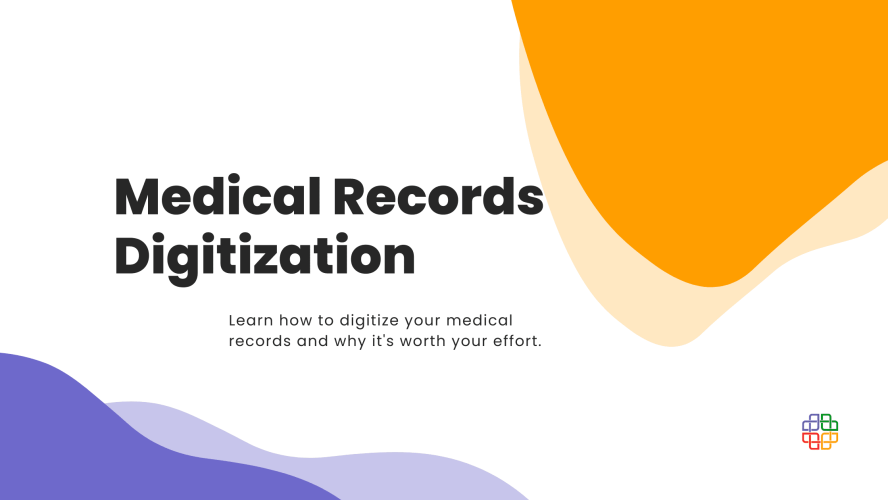Electronic Medical Record (EMR) systems are created to improve workflow and increase quality of care in medical facilities. Digitized records are quick and easy to use. They save the time and energy of both physicians and patients. But how to install an EMR and digitize your medical records?
We invite you to read this short and simple guide, and find out the answers to your questions.
Why should I implement an EMR in my clinic?
EMR enables healthcare workers to keep and manage patients’ medical records in a digital form. Gathered in one place, all of the data is easily accessible. It not only facilitates the work of physicians, but also allows them to have more clear and integral information about each patient. Thanks to that, they can plan more effective treatments and successfully help more people.
EMR can be also really useful for specialists dealing with visual data (e.g. x-rays). They do not have to worry about data being lost by patients or damaged. Every image is safely kept within the system, and can be quickly accessed for the reference.
In remote parts of the world, EMR can make a great difference for patients who travel to their clinic from distant locations. They can be taken care of much faster, because the medical workers will no longer have to search for their paper records in a storage room full of packed up shelves. All it will take to gain access to patients’ records are a few clicks in the system.
EMR also increases efficiency, and it is especially important in underserved countries where the number of healthcare workers is still too low to meet the needs of the society. The smoother each appointment goes, the more people can be treated.
How do I digitize my medical records?
There are a few methods to implement an EMR system. Depending on your space, time and resources, you can decide to set up your own server room, or use the service of a cloud hosting provider. The second option is much faster and requires less preparation on your part.
The host will install the EMR for you on their server, and configure it to suit your needs. You won’t have to worry about space, because your EMR will be connected to the server in a cloud. Another advantage of this solution is that the server will be maintained by the host.
Once your EMR is installed, you will have to go through a long and tedious process of digitizing your existing medical records. To do it in the most efficient way, it is recommended to start from the patients that will be visiting your clinic in the nearest future. Entering their records first will enable physicians to access them during appointments and save the new data in the system, without having to write it down on paper. From there you can gradually conduct the process of digitization, until all of the records are entered into the system.
Which EMR should I choose?
When it comes to EMR the best choice is certainly OpenMRS. It is open source and free-of-charge. Moreover, it has an active and helpful community that will always try to come up with solutions if you encounter any problems.
Like many EMRs, OpenMRS’ primary function is to enable medical workers recording patients’ medical history in an electronic form, instead of a paper one. This, however, is just the basis of a vast and diverse platform, consisting of many different modules that can facilitate a lot of processes inside of a hospital or a clinic.
OpenMRS can assist health workers with:
- Gathering patients’ data in one place;
- Keeping the data safe from natural disasters;
- Managing the data and modifying it according to situation;
- Collecting each patient’s clinical history with notes, prescribed medicines and diagnoses;
- Finding needed information quickly;
- Communicating between health workers in institution;
- Communicating between health worker and patient;
- Managing patients’ visits;
- Creating ID cards and personal profiles for patients;
- Working in offline mode and manually synchronizing the data when internet connection is available.
These are just a few examples of OpenMRS’ functionalities. There are many more specialistic features that can be installed according to the client’s needs.
If you want to learn more about how OpenMRS helps people around the world, check out our case studies.
How do I install OpenMRS?
A great way to install OpenMRS is to do it via EMRSCloud – a cloud hosting service that offers a complex help with implementation. It is managed by specialists that also actively participate in creating and improving OpenMRS’ code. They know the system inside-out and will not only help you in the installation process, but also provide continuous support in case any bugs appear.
If you are new to OpenMRS, EMRSCloud professionals will guide you through the process of configuration and selection of modules that are best suited for your needs. If you are an experienced OpenMRS’ user, they will install the newest version of the system for you, and make sure it is configured to meet your requirements. Either way, EMRSCloud can provide you with a functioning system that is ready-to-use. All of this without the need to set up your own server, because it will be also provided to you though the cloud hosting.
EMRSCloud’s mission is to give even more people access to electronic medical record system, and make their quest of saving lives easier. If you would like to learn more and become EMRSCloud’s client, visit its website: emrscloud.com.
Learn more!
How To Install OpenMRS Easily? Welcome To EMRSCloud!
How To Use An EMR Without Internet Connection?
How Long Does It Take To Implement An EMR System?




